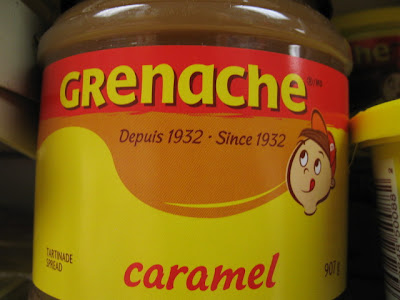Labels... Who needs them?
 We all need them. I'd go freaking nuts if there were no labels around when it comes around to wine time.
We all need them. I'd go freaking nuts if there were no labels around when it comes around to wine time.
The wine label on your bottle indicates so many different things that shape a wine on many different levels. We're talking appellation, place of origin, type or style, vintage, alcohol level, producer, vineyard, bottler, or importer... the list goes on and on and each of these things greatly affects whether you're going to best appreciate the bottle.
WHAT TO LOOK FOR ON A LABEL WHEN SURVEYING A WINE BOTTLE
The following are the main categories suggested by Jancis Robinson as the typically mandatory bits of information on a given wine label, although national or international minimum criteria may be stricter on a local or regional basis.
For each of the following label information categories, I've included a real-life example. The example is based upon the Prado Rey bottle of wine you see pictured at left. Click on it to enlarge it if you wish to follow along with what's what on a typical label.
- Wine designation: Denominación de Origen (or D.O. -- an official Spanish appellation desginating quality)
- Geographical reference: Ribera del Duero
- Volume: 750 millilitres (standard wine bottle size)
- Alcoholic strength: 13%
- Vintage year: 2001
- Name and address of producer: Real Sitio Ventosilla (S.A.) Gumiel de Marcado, España, EU (it's Spanish wine!)
- Bottling information: Estate bottled (written in red across the image and since I bought this in Quebec, it's also in French print mis en bouteilles à la propriété -- is that missing "r" a typo?)
- Varietal information: none specified (this is likely a blend of grape varieties)
- Gratuitous government interference: something on the back about containing sulphites
- Sweetness: none specified (most wines, especially dry wine which are in the vast majority)
- Fizziness: none specified (this does not apply since it is not a fizzy wine)
I would also add these other types of information to look for on your wine bottle.
- Product Origin: Spain
- Type of Wine: Red
- Style of Wine: Crianza (separate top label, cut off from photo)
- Importer: Bergeron-Les-Vins
- Product Number: +929034 (useful when shopping for a specific bottle)
WHAT NOT TO LOOK FOR IN A LABEL
One major way the label helps is it signals low quality as in serious plonk or if you're in for an unpleasant surprise. I'd say be careful if your label doesn't sport at least five of the label items listed on this page. Otherwise you might be in unchartered territory.
For example, take the contents held in the glass container at right. Sure, you've got grape varietal information (Grenache), volume -- oh wait that's weight (907 grams), and something vague about the producer being in the business for a long time (Since 1932 -- glad that's not the vintage year!) ... ah, how old-fashioned and quaint. But don't be fooled! That "caramel" claim is not exactly a suggestive wine tasting note.
As a wino, I'd definitely avoid cracking open this one.
Never trust a wine that you can spread with a knife! (Or, for that matter, a wine label that depicts children licking their lips...)







No comments:
Post a Comment